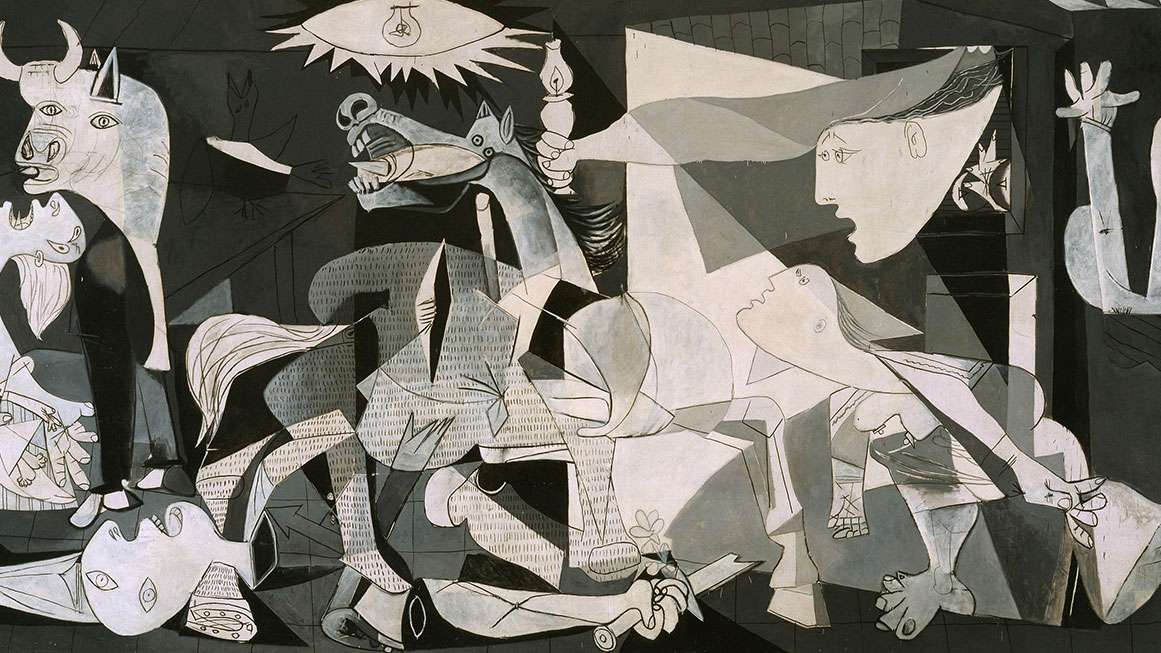Normální zobrazení
-
AmigaGuru's GamerBlog
-
The Worst Game Of 2023 Was So Awful That It Got Removed.
What does one write about if everything on the website is just too good? Exactly, that's the time to bring out all the trash and while I had a top-rated "worst stinkers games" series here on the blog before, it just felt wrong to try and revive it as I felt it just dragged the blog down too much, but after a lot of feedback it is time to revive the concept, welcome back "stinkers". Source
-
Latest

-
Guernica's Recovery From Ruin
Before Mariupol, before Gaza, before Hiroshima and Nagasaki and Dresden and the Blitz, there was Guernica. The little Basque town in northern Spain was once the byword for state cruelty following the 1937 bombing of Guernica during Spain's civil war—an unprecedented air attack on a populated city that shocked the global conscience and inspired Pablo Picasso's most famous work, Guernica. An atrocity is a weird thing for a place to be famous for, b
Guernica's Recovery From Ruin

Before Mariupol, before Gaza, before Hiroshima and Nagasaki and Dresden and the Blitz, there was Guernica. The little Basque town in northern Spain was once the byword for state cruelty following the 1937 bombing of Guernica during Spain's civil war—an unprecedented air attack on a populated city that shocked the global conscience and inspired Pablo Picasso's most famous work, Guernica.
An atrocity is a weird thing for a place to be famous for, but neither tourists nor locals seem very fazed. Guernica, the painting, is such an abstract depiction of civilian suffering that visitors have no problem posing in front of it. Guernica, the town, is a center of Basque culture. For Basques (who know it as Gernika), the violence that moved Picasso nearly a century ago is merely one chapter in a long history of resilience in their quest for freedom.
Predating the Roman Empire and even the Celtic civilization before it, people along the Bay of Biscay have spoken Basque, a language with no known living relatives. Empires have risen and fallen, but Basque Country has preserved its unique culture and laws. From medieval times onward, Spanish monarchs would swear to uphold Basque traditions under a sacred tree in Guernica.
"It is a republic; and one of the privileges [Basques] have most insisted on, is not to have a king," wrote American Founder John Adams in 1786. "Another was, that every new lord, at his accession, should come into the country in person, with one of his legs bare, and take an oath to preserve the privileges of the lordship."
More than a century of Spanish revolutions and crackdowns gradually eroded Basque autonomy. Then, in July 1936, the pro-fascist Gen. Francisco Franco launched a mutiny against the Third Spanish Republic. In a bid for Basque support, the besieged Republicans quickly restored self-government to the region. By April 1937, Guernica was the last pro-Republican community standing between Franco's forces and the major city of Bilbao. With German and Italian air support, Franco moved to take the town.
"Guernica, the most ancient town of the Basques and the centre of their cultural tradition, was completely destroyed yesterday afternoon by insurgent air raiders," reported British war correspondent George Steer a day after the first wave of bombers struck. "In the form of its execution and the scale of the destruction it wrought, no less than in the selection of its objective, the raid on Guernica is unparalleled in military history."
"Guernica was not a military objective," Steer continued. "The object of the bombardment was seemingly the demoralization of the civil population and the destruction of the cradle of the Basque race."

Steer's report shocked Picasso, who had been commissioned by the Spanish Republic to make a display for the World's Fair in Paris. He abandoned his previous plans and painted Guernica within a few weeks. The artist's dramatic response to this tragedy—which was controversial at the time seeing as the World's Fair was meant to be a feel-good cultural exhibition—was showcased next to photos of dead children and propaganda films about Franco's cruelty.
What was once "unparalleled" too soon became routine. Following the raid on Guernica, the Imperial Japanese military launched a massive invasion of Shanghai. (A photo of a Chinese boy in the rubble, titled "Bloody Sunday," became another symbol of the brutality of air wars.) World War II saw air warfare escalate dramatically, culminating in hundreds of thousands killed in carpet bombing, firebombing, and atomic bombing.

Today, Guernica is a sleepy, peaceful town. Franco's death in 1975 marked Spain's return to a constitutional monarchy, restoring significant political autonomy to the Basque people. The Guernica town hall flies both a Spanish flag and a Basque flag while most other buildings don't bother with the Spanish one. A nearby gift shop sells Basque nationalist souvenirs—keychains with Basque crosses, fridge magnets with pastoral scenes—while Basque-language punk rock emanates from the speakers.
A replica of Guernica sits near the holy tree where the (now elected) leader of Basque Country once again takes the oath of office, and tourists flock to take photos next to the mural. What was once a jarring disruption to cultural tradition is now cultural tradition itself.
The post Guernica's Recovery From Ruin appeared first on Reason.com.

